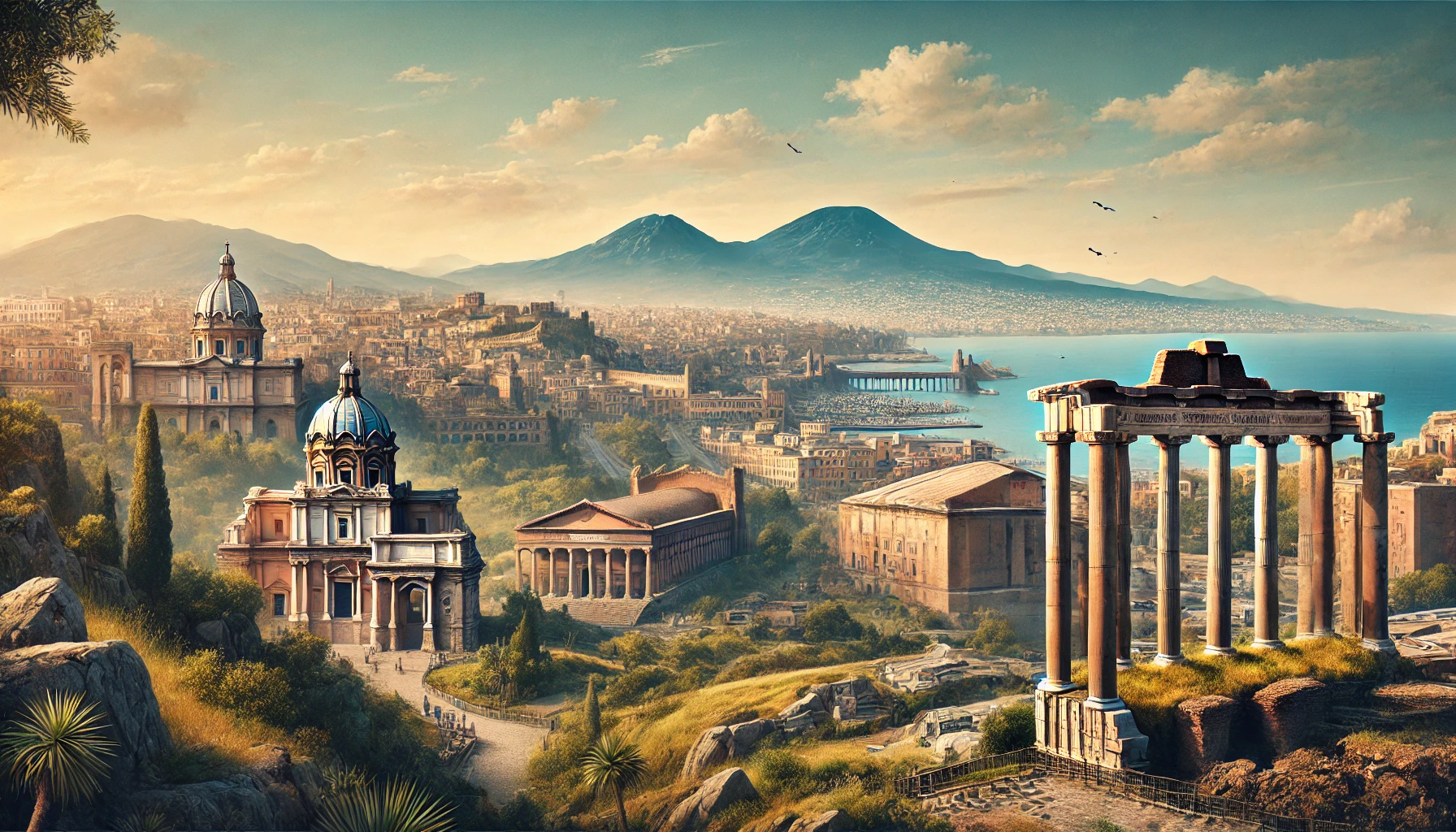Contents
Johann Wolfgang von Goethe’s “Italian Journey“ is not only a literary masterpiece but also a travelogue that offers an intimate glimpse into the Italy of the late 18th century. Written between 1813 and 1817, this account is based on Goethe’s own experiences during his journey through Italy from 1786 to 1788. In this vivid travel diary, Goethe shares his impressions, musings, and emotional responses to the art, culture, and natural beauty of the Italian peninsula. The places he visited have since become synonymous with his name, immortalized in the pages of his journal.
Let us delve into three of the most significant locations that Goethe visited during his Italian voyage: Rome, Naples, and Sicily. These cities, each with its unique character, influenced Goethe’s writings and deepened his artistic and philosophical perspectives.
Rome: the eternal city
Rome was perhaps the most pivotal destination of Goethe’s Italian journey. Arriving in the city in 1786, Goethe found himself immersed in its rich history and grandeur. The city’s ancient ruins, particularly the Colosseum, the Forum, and the Pantheon, captivated his imagination. Goethe was especially moved by the timeless art of the city, spending countless hours studying classical sculptures, paintings, and architecture.
In his journal, he noted the profound effect Rome had on him as an artist and intellectual. He saw the city as a living museum, where ancient history and modern life coexisted. Goethe’s time in Rome rekindled his passion for art and poetry, and he described the city as a place where one could learn “how to live.”
Rome’s influence on Goethe’s work is evident in the way he contrasts the grandeur of the city’s past with the more humble realities of contemporary life. His experiences in Rome not only deepened his love for the classical world but also helped shape his later philosophical reflections.
Naples: the city of vibrant contrasts
Goethe’s journey continued south to Naples, a city he described as vibrant, chaotic, and full of life. In Naples, Goethe found a striking contrast to the solemnity of Rome. The city’s lively streets, bustling markets, and exuberant inhabitants left a lasting impression on him.
The natural beauty of the Bay of Naples and the looming presence of Mount Vesuvius provided Goethe with a sense of awe and wonder. He was fascinated by the volcano, which at the time was still active, and made a point of climbing it to witness its eruptions firsthand. The dramatic landscapes of Naples and its surroundings became a significant source of inspiration for Goethe’s writings.
In his Italian Journey, Goethe remarked on the Neapolitan spirit of living for the moment, a concept he found both liberating and disorienting. The city, with its blend of natural beauty, history, and vivacious energy, provided Goethe with new perspectives on the relationship between nature and humanity.
Sicily: the classical island of myth and mystery
Sicily was Goethe’s final major destination in Italy and perhaps the one that moved him the most on a personal and artistic level. He called Sicily “the key to everything,” and his time on the island deepened his understanding of the ancient world. Sicily’s ruins, particularly those in Agrigento, Syracuse, and Segesta, struck Goethe as the purest expressions of classical Greek art outside Greece itself.
The island’s rugged beauty and the sense of timelessness that pervaded its landscapes had a profound effect on Goethe’s worldview. Sicily’s mythology, intertwined with its history, captivated Goethe, and he wrote extensively about the emotional and intellectual impact the island had on him.
Goethe’s exploration of Sicily was also a journey into the heart of Mediterranean culture. The island, with its unique blend of Greek, Roman, Arab, and Norman influences, offered Goethe an unparalleled opportunity to reflect on the complexities of cultural exchange and the fluidity of identity in the Mediterranean world.
The legacy of Goethe’s Italian journey
Goethe’s “Italian Journey” remains a significant work of European literature, not only for its artistic merit but also for its portrayal of Italy at a time of great cultural and social change. The places Goethe visited during his journey – Rome, Naples, and Sicily – shaped his intellectual development and contributed to his understanding of art, history, and the human condition.
Today, travelers can still visit these locations and walk in Goethe’s footsteps, experiencing the same awe and wonder that inspired one of the greatest minds of European literature. Whether it’s standing before the ruins of ancient Rome, gazing at the azure waters of the Bay of Naples, or exploring the mysterious landscapes of Sicily, Goethe’s Italian journey continues to resonate with those who seek to discover the beauty and complexity of Italy.

